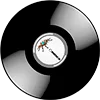
What is folk? History, genres, iconic artists, instruments, and the modern sound of folk music in the 21st century.
Folk (folk music) is a musical art form that conveys the culture, traditions, and spirit of a nation. It combines simple melodies with deep meaning, rooted in traditional songs and reflected in contemporary music — from acoustic ballads to indie folk and folktronica.
History and Origins
Folk music emerged naturally in all cultures around the world as a way to tell stories, express beliefs, and share emotions. Before the recording era, it was transmitted orally from generation to generation.
Key milestones:
- 19th century — collection and transcription of folk songs (England, Ireland, Scandinavia, Ukraine, etc.)
- 1930s–50s — the American folk revival (Woody Guthrie, Pete Seeger)
- 1960s — the rise of protest folk (Bob Dylan, Joan Baez)
- 1970s–90s — folk rock, ethno folk, the Celtic wave
- 2000s–2020s — the boom of indie folk, folktronica, and neofolk
Characteristics of Folk
- Emphasis on lyrics and storytelling
- Predominance of acoustic instruments (guitar, violin, banjo, dulcimer, flutes, drums)
- Simple, memorable melodies
- Often performed in a traditional language or dialect
- Themes of love, work, nature, war, legends, and folk wisdom
Types of Folk
| Style | Description | Examples |
|---|---|---|
| Traditional Folk | Authentic traditional songs | Scandinavian, Irish, Ukrainian, Balkan folk |
| Folk Rock | Fusion with rock, electric guitars | Bob Dylan, The Byrds, Fairport Convention |
| Indie Folk | Gentle sound, modern themes | Bon Iver, Iron & Wine, Fleet Foxes |
| Neofolk | Darker, symbolic, ritualistic folk | Rome, Death in June |
| Ethno Folk | Use of indigenous instruments and cultural motifs | DakhaBrakha, Wardruna, AltaiKai |
| Folk Metal | Metal infused with folk instruments and melodies | Eluveitie, Finntroll, Arkona |
| Folk Electronic | Blending folk with downtempo and trip-hop aesthetics | Björk, Sufjan Stevens, CocoRosie |
Notable Artists
- Bob Dylan — an icon of American folk
- Joan Baez, Pete Seeger — voices of the civil rights era
- Simon & Garfunkel — harmony and poetic lyricism
- Wardruna — Norse ritual folk
- Lisa Gerrard (Dead Can Dance) — ethereal, world-infused ethno folk
- Florence + The Machine — folk spirit within indie pop
- DakhaBrakha, ONUKA — contemporary Ukrainian ethno folk
- Angus & Julia Stone, Mumford & Sons — gentle indie folk
Interesting Facts
- The word “folk” means “people” — it is music of the people, about the people.
- The song “Where Have All the Flowers Gone?” is considered an anthem of pacifism.
- Almost every country has its own folk tradition — from horns to didgeridoo.
- Modern folk is widely used in films, series, and advertising.
Where to Listen
- Spotify: Acoustic Folk, Indie Folk, Traditional Folk
- YouTube: NPR Tiny Desk (folk sessions), KEXP Live
- Bandcamp: ethno folk, folktronica, neofolk
- Festivals: Newport Folk Festival (USA), Rudolstadt (Germany), Faine Misto (Ukraine)
- Minatrix.FM: in the folk music catalog
Conclusion
Folk is the voice of the people, preserved through centuries. It carries the stories of ancestors, the sound of the land, and the hearts of those for whom song is not just music, but a way to live and remember. It bridges past and present, nature and humanity, roots and the future.
From ancient ballads and ritual chants to indie folk and folktronica, the genre has proven its universality and strength. It does not rely on complex effects — its main power lies in sincerity.
Today, folk is heard at festivals, in films, on the streets, and in headphones, uniting generations. It reminds us that culture lives as long as its songs are sung. Folk is the soul of humanity, told through simple chords and timeless words.

